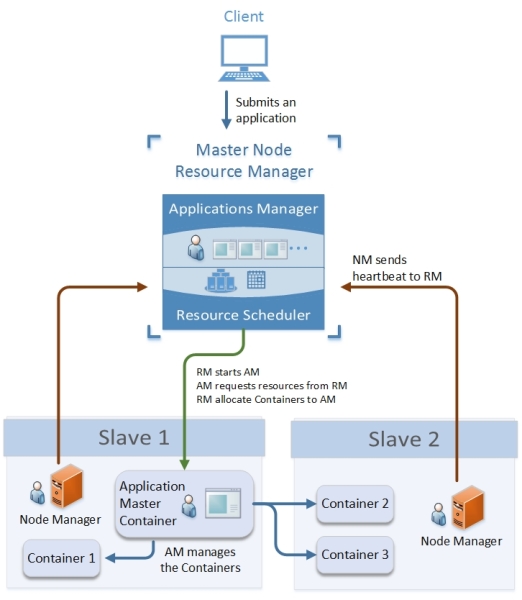In the previous topic, we discussed the YARN components. Here we'll discuss the high-level architecture of YARN and look at how the components interact with each other.

The ResourceManager service runs on the master node of the cluster. A YARN client submits an application to the ResourceManager. An application can be a single MapReduce job, a directed acyclic graph of jobs, a java application, or any shell script. The client also defines an ApplicationMaster and a command to start the ApplicationMaster on a node.
The ApplicationManager service of resource manager will validate and accept the application request from the client. The scheduler service of resource manager will allocate a container for the ApplicationMaster on a node and the NodeManager service on that node will use the command to start the ApplicationMaster service. Each YARN application has a special container called ApplicationMaster. The ApplicationMaster container is the first container of an application.
The ApplicationMaster requests resources from the ResourceManager. The RequestRequest will have the location of the node, memory, and CPU cores required. The ResourceManager will allocate the resources as containers on a set of nodes. The ApplicationMaster will connect to the NodeManager services and request NodeManager to start containers. The ApplicationMaster manages the execution of the containers and will notify the ResourceManager once the application execution is over. Application execution and progress monitoring is the responsibility of ApplicationMaster rather than ResourceManager.
The NodeManager service runs on each slave of the YARN cluster. It is responsible for running application's containers. The resources specified for a container are taken from the NodeManager resources. Each NodeManager periodically updates ResourceManager for the set of available resources. The ResourceManager scheduler service uses this resource matrix to allocate new containers to ApplicationMaster or to start execution of a new application.



